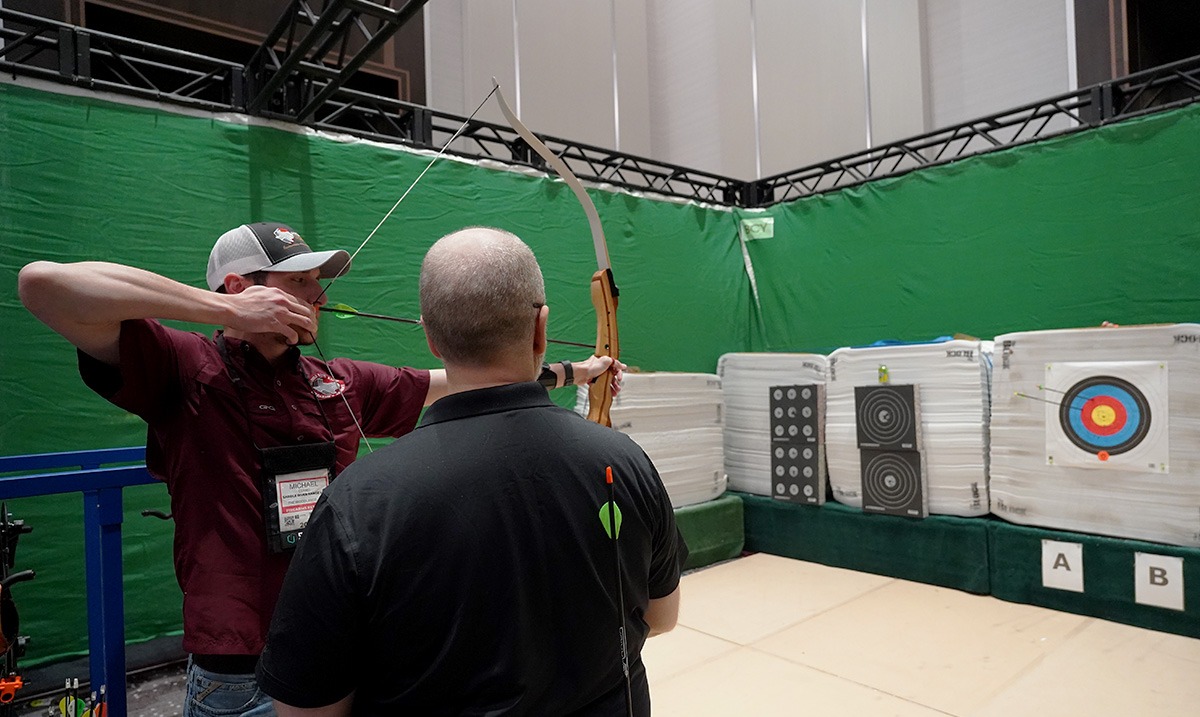 Back to News
Back to News
May 31, 2023
Biden Admin. Can’t Make Up Its Mind on Wildlife Refuge Traditional Ammo Ban Science
The Biden administration can’t make up its mind: are they following the science or not?
After conspiring with anti-hunting, antigun environmental activists in a “sue and settle” scheme and/or being coerced by these same groups into announcing a bait-and-switch for America’s hunters on public National Wildlife Refuges (NWRs), administration officials are having a hard time with the science to back up the restrictive policy, let alone whether they’re following the science.
In the span of less than two weeks, administration officials from the U.S. Fish and Wildlife Service (USFWS) testified in separate U.S. House of Representatives committee hearings, contradicted each other and played coy on the data – or lack thereof – behind the administration’s harmful policy.
It’s a confusing development for an administration that promised to “follow the science.”
Conflicting Messengers
At issue is the USFWS’s announcement last year to open up public hunting and fishing on 19 national wildlife refuges totaling approximately 54,000 acres. That’s a great thing. More Americans having more opportunities and access to partake in America’s greatest pastime is excellent news. They should have stopped there.
Instead, the administration included a poison pill that also phased in a ban of traditional ammunition and lead-based fishing tackle by 2026. The USFWS, according to their press release, indicated that this measure is based on the “best scientific data available.” The problem is there is no data anywhere that indicates traditional ammunition is causing population declines of any wildlife species at any refuge.
At a recent hearing of the U.S. House Committee on Natural Resources Subcommittee on Water, Wildlife and Fisheries, U.S. Rep. Jen Kiggans (R-Va.) questioned USFWS Director Martha Williams about the flawed policy.
“The banning of lead ammunition is projected to raise costs for consumers… making it too expensive for many people to continue these activities,” Rep. Kiggans warned. “Instead of expanding access for hunters and anglers, this effort makes it harder for the public to enjoy these opportunities.”
“What we are doing with lead now, in part because we received numerous comments, over the years so we’re being responsive to the public, and then also litigation,” Director Williams responded. “We are looking at the impact of lead in refuges, we’d like to not add additional lead on the landscape while we work with both the hunting and wildlife conservation commission and with the states in addressing, you know, probably refuge by refuge, very much in conjunction with the states on refuges.”
“So were there studies done to come to those decisions?” Rep. Kiggans pushed.
“Congresswoman, for any refuge that would not, um, would change what lead is allowed, from now going forward would involve a robust public process, including any impacts to specific refuges and species,” the director replied, attempting to clarify.
Her answer was certainly clarifying, but not in the way Director Williams thinks it was. What she did not say is that scientific studies were completed, or data examined, that definitively demonstrated that traditional ammunition had any detrimental impact on wildlife populations. That’s because those studies and data do not exist and the ban on traditional lead ammunition on NWRs was instead instituted due to pressure on the administration from anti-hunting activists, including the Center for Biological Diversity (CBD).
That’s Not What She Said
Director Williams’s “refuge-by-refuge, in-conjunction-with-the-states” response was a 180-degree pivot from what Members of Congress heard just days prior. In a separate hearing, Rep. Rob Wittman (R-Va.) explained his legislation, H.R. 615 – the Protecting Access for Hunters and Anglers Act – and questioned USFWS Deputy Assistant Secretary Matt Stricker about the lead ammunition ban. Rep. Wittman’s proposal would block such a move unless the Secretaries of the Interior and Agriculture could provide site-specific, peer-reviewed scientific field data that demonstrates traditional lead ammunition or fishing tackle is causing detrimental wildlife population impacts.
“I think we ought to make sure that decisions are made based on sound science,” Rep. Wittman stated. “This bill allows us to make sure that there are the necessary science-based guardrails on how these decisions are made.”
That’s not how the administration sees it. Assistant Secretary Strickler scoffed, asserted that Congress should “just trust us” on the science and stated his belief that USFWS lead ban rules should be applied to broadly existing studies across the entirety of the United States.
“But at the end of the day there’s a national interest in these conservation lands even if they are located within a state or straddle a couple of states that we need to be cognizant of and that the Fish and Wildlife Service has a responsibility to steward those lands,” Deputy Assistant Secretary Stricker said. “Partnering with the states is one thing. Having to ask them for permission is quite another.”
U.S. Rep. Doug LaMalfa (R-Calif.) gave his two cents, saying, “It seems you’re saying data and science to be a bad thing.” U.S. Rep. Jerry Carl (R-Ala.) put it even more bluntly. “Trust me. I’m from the government. You can trust me. That is such BS.”
Why It Matters
During the heights of the coronavirus pandemic, American hunting experienced a renaissance as millions of Americans, from diverse backgrounds, headed outdoors. It’s a development and a trend that benefits all Americans who enjoy the benefits of wildlife and habitat conservation, not just those hunting on public lands.
Firearm and ammunition manufacturers have paid over $16 billion, or $25 billion when adjusted for inflation, in Pittman-Robertson excise taxes to the Wildlife Restoration Trust Fund since 1937. Those manufacturers are supported when Americans purchase firearms and ammunition. The fund benefits all by supporting wildlife conservation efforts that encourage abundant wildlife and habitat restoration along with access to public lands for hunters, anglers and other recreationists.
What the science shows is that wildlife populations have never been healthier in America than they are today, all while hunters have used traditional hunting ammunition for centuries. Putting restrictions in place that create roadblocks for hunters is detrimental to the user-pays system that allows America’s abundant wildlife populations to thrive still.
The Biden administration should have the backbone to standup to the anti-science, anti-hunting activists pushing harmful policies on the American public. That’s what they vowed to do. The public, on the other hand, shouldn’t hold their breath.
Categories: BP Item, Featured, Government Relations, Top Stories








